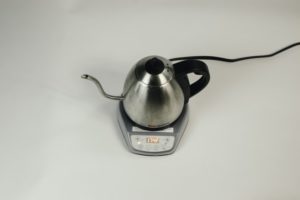Not only can you simply create your favorite coffee or tea, but you always can also use warm water to make fast soups, prepare bottles for toddlers, or even boil eggs. In this article, we are going to tell you all about How to Boil Milk In Electronic Kettle. One could get enamored with this handy and time-efficient technique of boiling water while you wonder whether they might use this wonderful device for something else, such as boiling milk.
Although the notion is appealing, electronic kettles are not designed for this use. We will examine how your water bowl can have an influence on the boiling milk kettle, the risks that arise, and how you can safeguard your electronic water bowl from potential damage if you still wish to boil milk.
There are, however, specific methods for boiling milk in a kettle.
First and foremost, do not close the lid. With the cover on, pressure builds up, and as we all know, milk swells and may boil over. Without a lid, you may switch off the kettle as quickly as the milk begins to rise, avoiding a big mess.
Another approach is to use indirect heat. Pour a little quantity of water into a kettle and set the milk in a glass, ideally a steel one, inside the kettle. The hot water will reheat the milk without scorching it or leaving any residue.
So, unless you’re using a kettle particularly intended to boil milk, it’s not a good idea to boil milk in an electronic kettle. Because milk does not evaporate like water, it may boil over and cause a dangerous short circuit if it gets into the kettle’s electronic base. The protein and fat in milk adhere to the base and walls of the kettle, potentially burning them.
These burned remnants are tough to remove and make your kettle smell like sour milk. You can reheat the milk with an open lid while staying nearby to prevent an overflow.
Is Electronic Kettle designed to boil milk?
The solution is brief and straightforward. Not intended for use in heating milk, electronic kettles. They are especially intended for water heating. This is why boiling milk in electronic kettles isn’t an intelligent idea.
The properties of water and milk are quite different. In contrast to water, the milk won’t evaporate and may pour out, causing a great problem. Milk is a complex water, protein and fat mixture. When heated, protein and fat are separated from the water, they form a layer that inhibits condensation above the water. The milk is boiled down. This excess of liquid can generate and damage a short circuit at the kettle’s electrical base.
The Kettle Will Not Turn Off, And The Milk Will Burn
When steam reaches at the top of the kettle and flows through a tube, a metal oxide plate is expanded which triggers the switch. Because of the protein and fat layer, the kettle does not shut off and continues to boil the milk until the water dries and the residual protein and fat are burned within. The milk might boil down until the water is emptied.
Due to its protein and fat included in milk, it adheres when heated to the inside of the kettle. If the kettle is not designed to clean every surface rapidly, it is difficult to remove these sticky residues. It gets caught in your kettle’s crevices and compromises its operation. The sensors may cause these dairy deposits to fail.
FAQs
Can I Continue To Use Electronic Kettle To Boil Milk As A Common Practice?
You can boil milk in a kettle, although this is not recommended. It has the potential to go wrong in a variety of ways, which is why it is not a recommended procedure.
While the idea is tempting, electronic kettles are not intended for this use. In this post, we’ll look at how using the kettle for boiling milk may affect your kettle, what the possible dangers are, and how, if you still want to boil milk, you may safeguard your kettle from injury.
Is It Necessary To Clean The Electronic Kettle, every time?
You must clean your kettle right after using it. This might greatly reduce difficulties and increase its usability. Remember how we discussed how boiling milk in a kettle leaves some residue?
Not only is the residue difficult to remove from the kettle, but it may also leave a distinct odor in the kettle.
This might have an impact on the water you’re about to boil in the kettle. They’d taste and smell like burned milk.
This odor and flavor may be extremely unpleasant.
Also, check out How to Connect Laptop to LG Smart TV Wirelessly, How to Charge Laptop Without Charger and How to Find HP Laptop Battery Model Number to know more about these important queries.








